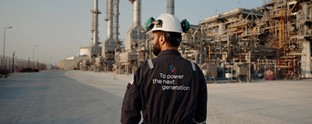Circle game

Brands that can engage new audiences, existing supporters and the media around events have to ensure their social media, partnership and communications strategies are all aligned. Brittany Golob investigates the challenges and successes in the branding of cyclical events. Additional reporting by Liam DeStefano
The Olympic Games has a commitment to simplicity in its global ring icon, complemented every two years by the host city’s unique, vibrant and characteristic approach to brand design. But for event brands operating on a cycle, it’s not necessarily that simple. The challenge – in sport, music or beyond – lies in the decision between a consistent, iconic approach to branding and a flexible, reimagined visual identity.
“The events sector can be ever-changing,” Christian Hill, Manchester-based marketing and digital agency Project Simply summarises. Branding and communications are essential to any event hoping to engage with viewers, participants and attendees, but the approaches to those can focus on either crafting a long-term icon or an ever-changing eye-catching design. The interplay between events organisers, sporting associations and partnering brands requires the brand strategy to be well-defined, authentic and appropriate to the target audiences.
For the Vitality Netball World Cup, taking place this July in Liverpool, building an effective partnership was key to approaching the event’s branding. England Netball had experienced immense success at the 2018 Commonwealth Games on Australia’s Gold Coast (another lesson in cyclical branding in itself) and was raring up to host the 2019 tournament off the back of its gold medal. It used a partnership with health and life insurer Vitality to build the world cup brand, increase awareness and redefine the conversation around netball.
“We want to be considered as a mainstream sport that people want to read about. Players are now very proud of their sport,” Joanna Adams, CEO of England Netball says. Lisa Parfitt, managing director of Engine Sport, part of the marketing and communications agency Engine, echoes that. “The netball audience is an incredibly proud audience. For so long they’ve had to defend their sport. Now…women are really proud to talk about how they play netball.” That was a sentiment that Vitality tapped into in order to support the world cup; an important part of the brand’s own strategy has been gender parity. Vitality’s MD Nick Read says the female focus to the brand’s sponsorship strategy has allowed it to support grassroots and professional netball while fulfilling its strategy of promoting healthy and active lifestyles among women.
Sport partnerships can also provide a valuable opportunity for brands to communicate particular values or characteristics. Jaguar Land Rover has used its partnership with the Invictus Games allowed it to express its campaign for a ‘global mobile revolution’ and its drive to build cars more beneficial to all humanity. That alignment of values is key in sports partnerships.
The Vitality Netball World Cup, visually, is vibrant and colourful, but it is the tone of the partnership that defines its strategy. “Authenticity is really important,” Parfitt says of sport partnerships like this one. “Vitality has a very strong legacy of supporting sport and its core purpose is to make people healthier.” She warns brands against jumping on the bandwagon of popular sports or events, leading to a disjointed partnership that amounts to little more than a labelling exercise. Additionally, in women’s sport, the opportunities are plentiful for brands that are brave enough to look beyond broadcast value and find a way to align their purpose with a specific sport’s audience.
Partnerships can also be hugely effective for music festivals, in which marketing budget and reach are at a premium. In research with festival owners worldwide, carried out by Project Simply, respondents cited partnerships with brands among the most effective marketing strategies. One respondent said, “Collaborating with partners is our most effective form of ticket sales as we can make use of shared audiences for no cost.” What hasn’t proved successful for festivals, however, is the use of influencers. One festival owner even cited that 50% of its sales came from word-of-mouth referrals, with social influencers making little to no impact on ticket sales.
However, if aligned carefully with strategy, social can be a boon for viewership of a cyclical event, as the NHL Stanley Cup has shown. Using a formulaic approach to Twitter posts, it engaged an audience with story-driven, easy to understand content that improved interaction with the sport. In 2018, that resulted in an increase in viewership by 66%.
“We’re measuring
ourselves against the number of people we communicate with and engage with. Success for us would be we’ve built awareness and engagement nationally and internationally, but also that we’ve grown the support among
new people”

In another world cup taking place in Britain this summer, however, influencers have helped build a unique visual, content and social media strategy as a means to both educate the public and promote the event. “We wanted to capture the essence that what makes the Cricket World Cup special is the carnival atmosphere it brings,” says Adrian Wells, director of marcomms and ticketing for the ICC Cricket World Cup 2019. Working with comedians, poets, singers and cricket legends, the Cricket World Cup has built a patchwork brand that speaks to the varied communities that celebrate the sport. That vibrancy was expressed in a series of images produced for each host city and each participant nation. The collage style brings together fan culture, national symbols and colours, cricketers and sporting cues to excite existing fans and introduce new audiences to the sport.
The Cricket World Cup could easily have taken a heritage-based approach to its branding, by focusing on England as the home of the sport and its iconic grounds – like Lords Cricket Ground – at which the world cup would play. But, Wells says, they wanted something more inclusive, bolder and braver. Wells says, “When we developed this brand, it was how do we make this appeal to fans outside of the core cricket community as well?”
Providing information to families, urban audiences and young people who might not already be exposed to cricket was a key element of the communications strategy. This is a strategy Parfitt says is effective when trying to reach new audiences. “It might be that it’s not the rules of cricket that people really need to know about,” she says, citing other elements of education about the sport that could be approached – its family-friendliness and its community spirit and experience. Those are the very things Wells highlighted in the world cup’s branding.
It introduced programmes to engage with children across England and Wales, encouraging them to take up a cricket bat and have a go. “We’re measuring ourselves against the number of people we communicate with and engage with,” Wells says. “Success for us would be we’ve built awareness and engagement nationally and internationally, but also that we’ve grown the support among new people.”
A challenge both netball and cricket faced was in achieving cut-through and exciting people around an event that indeed does occur every four years. Parfitt says a way to do this is to focus on the stories and unique aspects of the sport that might inspire new audiences. For Wells, it was about driving excitement behind a key question, ‘Are you in?’ and the use of influencers, content and music. He says the personality of cricket is always allowed to shine through, but the organising committee wanted to push beyond that, in the hope that people would “sit up and take notice.”
That very challenge is the one that music festivals large and small face every year. With the need to reinvent their brands for every passing festival and minimal budgets with which to work, festival owners are under increasing strain. For some, like Coachella, the approach is simple: work with what you’ve got. Coachella’s poster has, for the past 20 years, kept the same format. It has instead worked with brands and influencers in a successful way to promote a ‘Coachella-style’ that then fuels the social media surrounding the festival, making it a must-attend event for some communities. Glastonbury, on the other hand, uses its Pyramid Stage icon across much of its branding, but keeps its audience on its toes with regards to poster and brand design each year.
Hill advocates for a balance between a strong sense of identity and a flexible, exciting approach. “Most festivals want to keep things cool and fresh year on year, but it’s always important to make sure the core message and vibe remains the same,” he says. “A lot of festival branding is very creative and illustrative, and sometimes a new illustrative concept can be adored so much that the concept drifts and the visual identity of the festival can get lost. The most successful brand updates we see are those that build on a strong platform, and develop with consideration and love for the memories they are creating in their attendees, and still striving forward to the future.” He adds, “Find that perfect match between repetition and innovation.”
That’s the very dichotomy expressed by most cyclical events – constant evolution or iconic repetition? The Super Bowl made the decision ahead of its 2011 event to simplify its branding – which had been colourful, to say the least, to that point – to focus on the Lombardi trophy and a bold, silver rendition of each Super Bowl’s number. Todd Radom, then of Landor, which carried out the initial update, told the Washington Post, “A sports event of this stature needed a consistent, iconic identity.”
Following suit are the Invictus Games, NBA Finals and NHL Stanley Cup, with similar event brands that are updated, though not rebranded, year-on-year. Perhaps its a matter of preference, but the approach to cyclical event branding varies based on the strategy. For the cricket and netball world cups, expanding the audience was a primary objective for both, thus dictating a multiplatform brand that engaged both visually and in terms of content. For upstart festivals, like Parklife in Manchester, crafting an identity and a positioning in the market in the first place has called for inventive, flexible branding each year.
Not every event can be the Olympics, but events are rich and valuable ways to build connections between brands, sports and their audiences, as Parfitt says, “They’re great opportunities where people are gathering together around their passions.” It’s just a matter of taking advantage of those opportunities as they arise.













